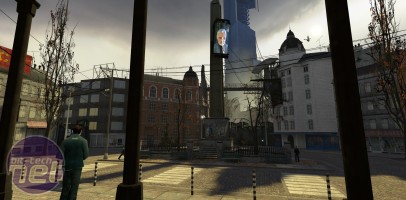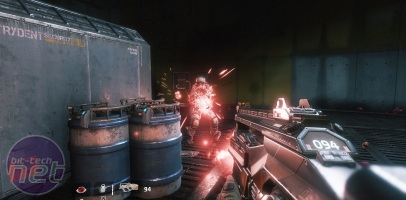Titanfall 2 proves Half Life 3 is possible
March 12, 2017 | 15:00
Companies: #respawn-entertainment #steam #valve


The chances of Half Life 3 happening become more remote with each passing year. At the beginning of 2017, Game Informer reported a source from inside Valve stating that Half Life 3 didn’t exist because nobody was interested in making it. According to the source, several attempts had been made to get Half Life 3 off the ground, with versions ranging from a straightforward FPS sequel to a VR game, but they all eventually ran out of steam (pun not intended) because Gabe Newell simply isn’t interested.
[break]
I don’t want to debate whether or not Half Life 3 is likely to happen, or what obligation (if any) Valve have to make it. But there is one aspect of the Half Life 3 argument that I want to address. Amongst the various proposed theories about why Half Life 3 hasn’t surfaced, fairly regularly I see the point made that Valve can’t make Half Life 3.

The argument goes that it has been so long since Half Life 2, and the expectations have become so vast for a third game, that it is impossible for Valve to meet those expectations. Half Life 2 may have been one of the most critically acclaimed games of its time, but the industry has moved on so much since 2004 that a linear FPS in 2017 simply wouldn’t cut the mustard. For Half Life 3 to work today, it would need to radically alter its core design, perhaps moving to an open-world, or becoming a VR game (as allegedly dabbled with by Valve).
It’s an argument which tacitly suggests that linear FPS’ can no longer be innovative, and if you look at the trajectory of the linear FPS since 2004, there appears to be some merit to it. Half Life 2 remains regarded by many as the best shooter ever made, and if that’s true, it would infer that the industry has failed to improve upon it. Even if it isn’t true, there’s little doubt the linear FPS has suffered a decline in the last five to ten years. Once the dominant genre, nowadays only a handful of first-person shooters are released each year, and of those the majority are multiplayer-centric, your Call of Dutys, your Battlefields, new eSports contenders like Overwatch and Paragon.

To give a more concrete example, In 2004 there were around 20 major FPS releases in that year. These included Doom 3, Far Cry, Joint Operations, Unreal Tournament 2004, Painkiller, Killzone, Halo 2, Medal of Honor: Pacific Assault, and a bunch of others. In 2014, that number had shrunk to about eight, despite there being exponentially more games released overall. Alongside the likes of Wolfenstein: The New Order and Call of Duty: Advanced Warfare, these included Titanfall, which was multiplayer Far Cry 4, which is open-world, Destiny, which is multiplayer and open world, and Rekoil, because I was exceedingly generous with my counting.
It’s safe to say that shooters, particularly linear, single-player shooters, are no longer in vogue, so it’s reasonable to assume that for Half Life 2 to be successful (not just financially but critically) it would need to evolve beyond its traditional framework. I’ve believed this myself at various points in the last few years. And then last year I played Titanfall 2.

Titanfall 2 goes out of its way to demonstrate that there’s life in the linear FPS yet. In many ways its single-player campaign is a natural successor to Half Life 2. Its basic structure seems to be based on Valve’s masterpiece. Not only does it provide you with a companion for the majority of its length, just as Gordon teamed up with Alyx Vance for large sections of Half Life 2, but each of its chapters explores a different concept that radically alters the game for its duration.
The difference between the two is that Half Life 2 rode a wave of new technologies when it launched in 2004, most notably physics, but also advances in animation and other graphical innovations. This is likely where the idea that Half Life 3 would also need to take advantage of new tech stems from. Titanfall 2 doesn’t do this. In fact, Titanfall 2 technically runs on the same engine as Half Life 2, using a heavily modified version of Source. Instead, all of Titanfall 2’s innovations stem from a design perspective, from thinking about how to take the FPS to new places without some new tech to take advantage of.

What Titanfall 2 does is play with our perspective of space and time, using them to create unique scenarios and challenges the player must face. Some of these are carried over from the multiplayer-centric first-game, such as the wall-running mechanic and the fact that you fight at two dramatically different scales – human and Titan. But Respawn combine these tried and tested mechanics with inventive concepts and highly varied level design. Blood and Rust sees the player fighting on a gigantic factory floor, where an assembly line is building pre-fab houses. It an environment where walls, floors, and even entire buildings are constantly being flipped around, chopped and changed. Because of this, your perception of space, what is up and what is down, is constantly challenged.
Meanwhile, Effect and Cause swaps out spatial trickery for time-manipulation, and this time you’re in control. The mission effectively sees you exploring a research laboratory in two different timelines – one in which the lab is destroyed and wreathed in flame, the other in which it is pristine and functioning, yet filled with hostile soldiers. You can switch between the two at any point, and Respawn use the mechanic to create some incredible platforming and combat challenges.

Respawn’s push for innovation isn’t limited to these showcase missions either. Such thinking is applied to almost every aspect of Titanfall 2. Movement, weapons, even dialogue has been examined under a microscope by Respawn in search of a way to iterate upon it, to change it and make it feel fresh and surprising. It thinks of its levels not merely as pretty backdrops for action sequences, but physical places that directly impact upon how that action takes place. Battling enemies while hopping between fast-moving aircraft has a profound effect on how you fight compared with having your feet set on terra firma. It even frames certain sequences around specific weapon. A late chase sequence uses the auto-targeting pistol to sustain the player’s momentum, and convey that your enemy here is time over and above the opponents in front of you.

Titanfall 2 is the closest any FPS has come to rivalling Half Life 2’s desire to push the genre forward, to examine at a granular level how every element of the game, from your surroundings to the weapon in your hand, affect play on a moment-to-moment basis. And it all stems purely from the designers’ imaginations. Titanfall 2 proves there’s plenty of room for developers to think about the FPS in different ways, without relying on technical innovations to power new ideas. If Respawn can do it with Titanfall, there’s no doubt that Valve, could do it with Half Life 3. The question is not one of possibility, but one of choice.

MSI MPG Velox 100R Chassis Review
October 14 2021 | 15:04








Want to comment? Please log in.